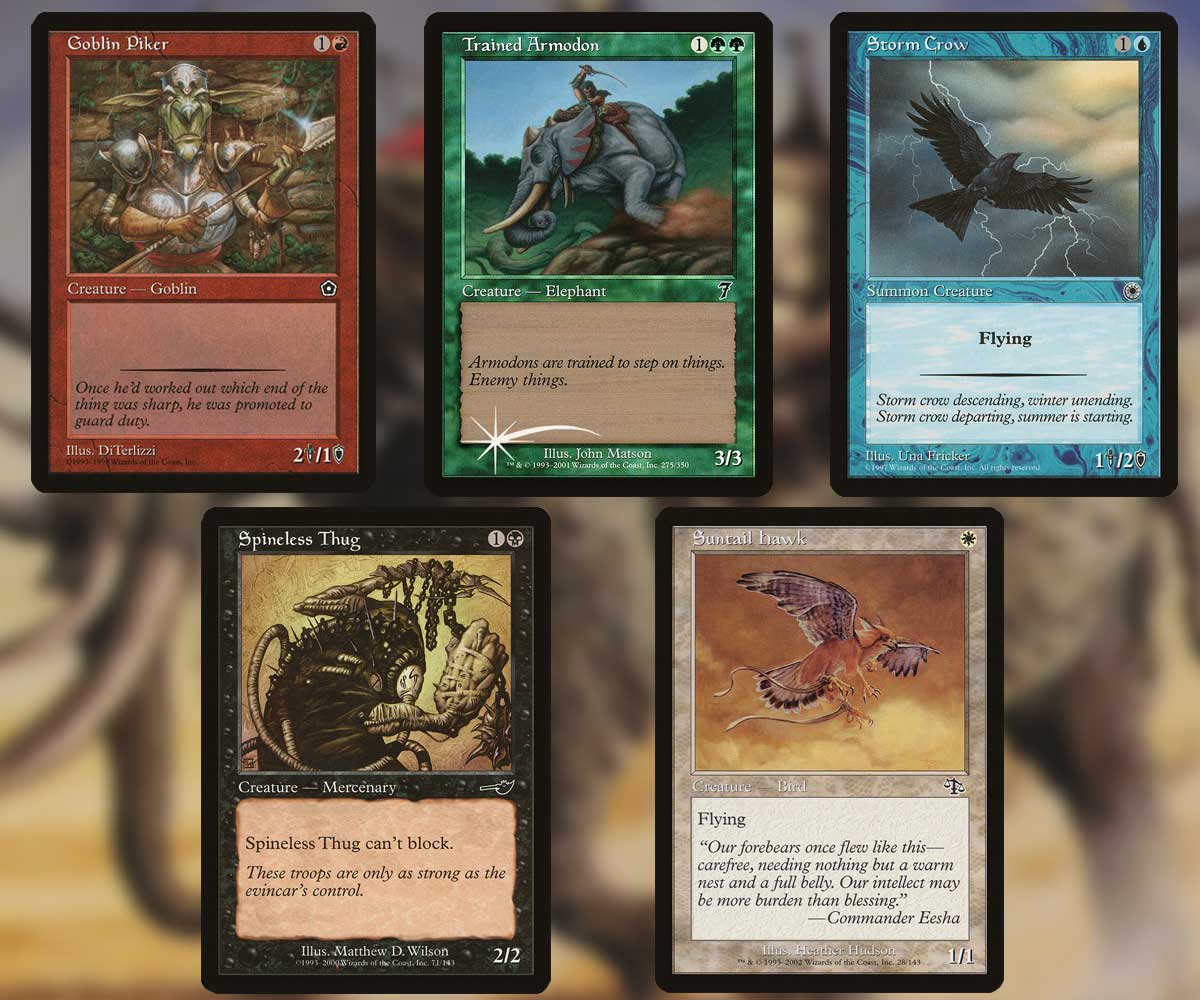Loading...
Products
Magic: The Gathering Line
Deck Box Type
Today I want to talk about an issue that often gets overlooked. Each time we get a new set (which seems to happen more frequently nowadays) players are clamoring for new fun cards that are also good. Magic players want new cards that are strong enough to put directly into their Standard, Commander or Modern decks. The point is that Wizards of the Coast is incentivized to make cards that can be played in multiple different formats to make players happy, but also to sell cards. In order to sell new sets, there often needs to be some sort of power level creep.
Wizards of the Coast doesn’t want to publicly recognize that the power creep does in fact exist. According to Mark Rosewater, "each set has things that go up in power and other things that are brought down in power." Mark seems to believe that the power level creep is only something that exists in players’ minds when they think of specific cards, and not something that happens broadly with each card printed. While I understand that one of the main figureheads behind designing the game wouldn’t want to fully recognize the power creep, but as a veteran player for over 20 years, it absolutely does exist. This isn’t a subject I would want to listen to Wizards of the Coast on.
While certain cards have gone down in power level over time (think the Power 9), the primary trend has been power levels going up. I would actually argue that the rate at which we see the power level of cards going up has been increasing incrementally in recent years, as we see more sets released each year. To help alleviate this, Wizards of the Coast has started to release format-specific sets to cater to different player groups. Think Commander Legends or Lord of the Rings: Tales of Middle Earth, where cards are meant for Commander or Modern respectively. However, the main base sets also contain cards that are meant for Modern and Commander. Why don’t mainstream sets only target Standard players? Unfortunately, the popularity of Standard in paper Magic has decreased over time, and if Wizards of the Coast were to make sets only for Standard, it would mean losing a lot of money.
Let’s take a look at a few classic cards from the history of the game of Magic.

Goblin Piker, Trained Armodon, Suntail Hawk, Spineless Thug, and Storm Crow are Limited staples that were reprinted in Eighth Edition and provide a baseline for what stats on cards were 20 years ago. None of these cards are good enough to be printed in current sets, as players would just laugh about how bad they are. Let’s compare Trained Armodon to Bloated Contaminator for instance, and you can see how massive the difference between the two cards is. While the cards above were mostly only played in Limited, the power creep has affected Constructed as well. Remember that planeswalkers weren’t always a part of Magic and were first released in 2007. The original set of five planeswalkers was Ajani Goldmane, Liliana Vess, Chandra Nalaar, Jace Beleren, and Garruk Wildspeaker.
There was a time when I actually played four copies of Garruk Wildspeaker in my Extended deck, which is the format that came before the existence of Modern. These planeswalkers saw mainstream use in Constructed, and just completely changed how the game of Magic was played. As planeswalkers have become better over time, the need to be able to pressure them effectively and create efficient answers to them has also increased.
As we arrive in 2023, we just had a set (March of the Machine) with some incredibly powerful legendary creatures that have joined forces so that two powerful creatures essentially team up to become one card. In my opinion, the worst way to create power level creep is printing cards that are straight-up better in every possible way than a card previously printed. For example, Bloated Contaminator compared to Trained Armodon or Centaur Courser.
When it comes to card design, the toughest cards to properly design are the ones that we have never seen before. For example, I think Fires of Invention is a really cool card with a high-power level that also isn’t like any other card we’ve seen before. You can make the argument Fires of Invention is not very fun to play against or is a little too good, but at least it’s different. During its time in Standard, Fires of Invention helped other cards that weren’t previously good in Standard, like Cavalier of Flame.
If cards are different but powerful, the goal is they won’t overlap too much with other decks already being played, but instead create brand new strategies. This is when MTG becomes the most fun, as it unlocks formats with many different viable strategies. I think Pioneer has been doing a good job of keeping a balance between the power level of cards and decks in the format.
I suspect in 20 years from now, assuming MTG is still a popular game, which I suspect it will be, we will look back on cards today and laugh. Each year, power levels of cards increase, and while it may not seem super obvious, when you take a step back and look at this through a historical lens, it becomes immediately apparent. The more new sets are released, the faster the creep seems to unfold. I know that this is an issue that folks on play design at Wizards of the Coast are doing their best to keep in check, but at the end of the day, there is no stopping this problem.